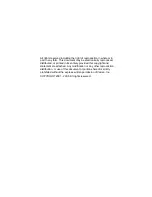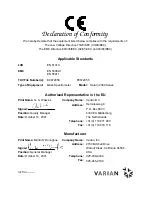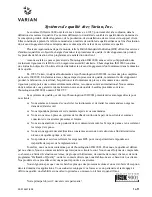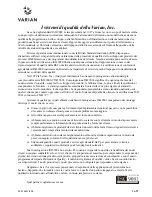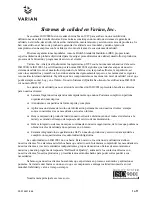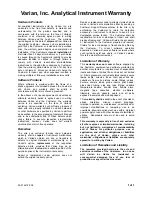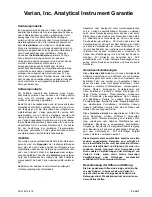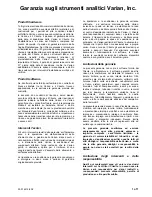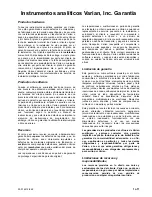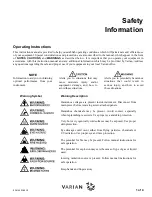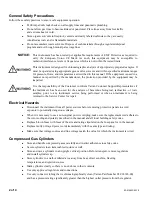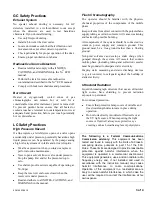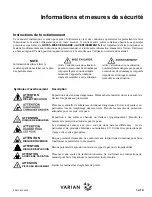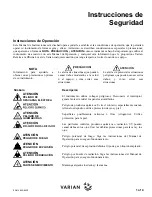
03-914603-00:10
3 of 4
GC Safety Practices
Exhaust System
No special exhaust ducting is necessary for GC
detectors installed in a well-ventilated room except
when the detectors are used to test hazardous
chemicals. If you do install ducting:
T
Use only fireproof ducting.
T
Install a blower at the duct outlet.
T
Locate duct intakes such that their vibration or air
movement does not effect detector operation.
T
Check periodically for proper operation of the duct.
T
Ensure proper ventilation in lab area.
Radioactive Source Detectors
T
Read carefully and comply with all NOTES,
CAUTIONS, and WARNINGS in the Ni
63
ECD
manual.
T
Perform the tests for removable radioactive
contamination described in the Ni
63
ECD manual.
T
Comply with leak test schedules and procedures.
Burn Hazard
Heated or cryogenically cooled zones of gas
chromatographs can remain hot or cold for a
considerable time after instrument power is turned off.
To prevent painful burns, ensure that all heated or
cooled areas have returned to room temperature or wear
adequate hand protection before you touch potentially
hot or cold surfaces.
LC Safety Practices
High Pressure Hazard
If a line ruptures, a relief device opens, or a valve opens
accidentally under pressure, potentially hazardous high
liquid pressures can be generated by the pump causing
a high velocity stream of volatile and/or toxic liquids.
T
Wear face protection when you inject samples or
perform routine maintenance.
T
Never open a solvent line or valve under pressure.
Stop the pump first and let the pressure drop to
zero.
T
Use shatter-proof reservoirs capable of operating at
50-60 psi.
T
Keep the reservoir enclosure closed when the
reservoir is under pressure.
T
Read and adhere to all NOTES, CAUTIONS, and
WARNINGS in the manual.
Flash Chromatography
The operator should be familiar with the physico-
chemical properties of the components of the mobile
phase.
Keep solvents from direct contact with the polyurethane
supply tubing as certain solvents will cause weakening
and leaks with possible bursting.
All components of the system should be connected to a
common power supply and common ground. This
ground must be a true ground rather than a floating
ground.
Non-polar solvents can develop a static charge when
pumped through the system. All vessels that contain
mobile phase (including tubing and collection vessels)
must be grounded to dissipate static electricity.
Employ static measuring and static discharge devices
(e.g., air ionizers) to safeguard against the buildup of
static electricity.
Ultraviolet Radiation
Liquid chromatograph detectors that use an ultraviolet
light source have shielding to prevent radiation
exposure to personnel.
For continued protection:
T
Ensure that protective lamp covers of variable and
fixed wavelength detectors are in place during
operation.
T
Do not look directly into detector fluid cells or at
the UV light source. When inspecting the light
source or fluid cell, always use protective eye
covering such as borosilicate glass or polystyrene.
The following is a Federal Communications
Commission advisory: This equipment has been
tested and found to comply with the limits of a Class A
computing device, pursuant to part 15 of the FCC
Rules. These limits are designed to provide reasonable
protection against harmful interference when the
equipment is operated in a commercial environment.
This equipment generates, uses, and can radiate radio
frequency energy and, if not installed and used in
accordance with the instruction manual, may cause
harmful interference to radio communications.
Operation of this equipment in a residential area is
likely to cause harmful interference in which case the
user will be required to correct the interference at his
own expense.

